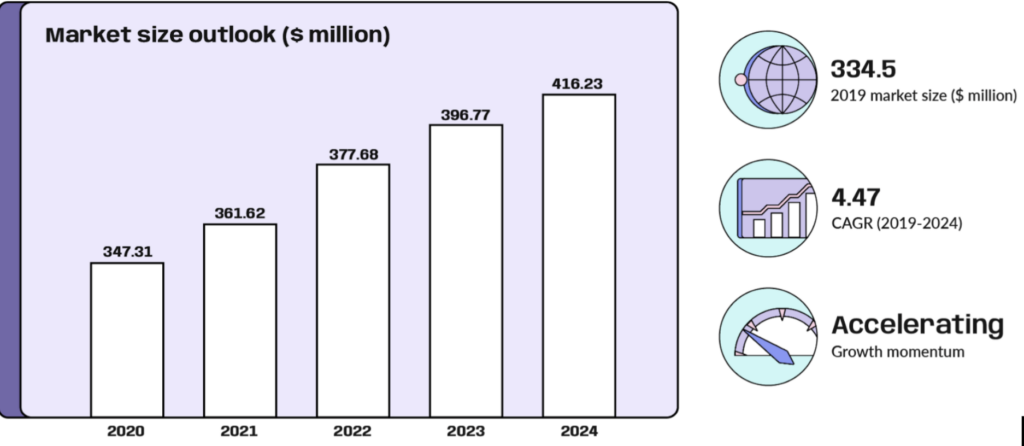Contents
Today, 700 million people have gained access to the financial world. However, +2 billion people still don’t meet the high standards set by most lending institutions.
A possible solution for this problem may be the microfinance market which is expected to grow by USD 122.46 billion during 2021-2026 at a CAGR of 11.61%. And this exponential growth will only be possible if the microlending industry can cover an increasing number of people. As we can see, economic incentives exist. Is it enough?

Are microcredits the answer to the financial inclusion problem?
Microcredits do not focus on people’s past, but on their future. Ordinary people don’t have much of a track record to prove themselves to traditional banks. So why not give them a break?
Father of microfinance and Nobel Prize in Economics winner Mohamed Yunus.
The microcredit
Before delving into the issue of trust, let’s first talk about what micro-lending is and its importance in the current global context.
According to financial experts, microcredits are small loans of US$25+ for small entrepreneurs, homemakers, or anyone who cannot access traditional loans.
These loans differ from traditional loans, given by large banks to companies or people who can meet the required standards.
Microcredits are focused on helping the historically excluded, such as:
- Blue-collar workers in undeveloped or developing countries: This sector of the population doesn’t always have the ability to demonstrate the value of their work. Therefore, they generally cannot access credit and cannot improve their quality of life, as the Community Development Journal published.
- Small entrepreneurs: Many small entrepreneurs cannot meet all the requirements that a bank requests in order to grant the necessary credit to start a company. As a result, many great ideas have been unrealized.
- Rural cities: In undeveloped or developing countries, the population outside the major cities can’t access the financial system.
“Banks want and need to know your story, what you’ve done, what you’re doing, what companies you’ve been building. All your past, the most they can have”.
So, in the end, Microcredits are a type of financial service that can help individuals and businesses to start or grow their enterprises, which can, in turn, help to create jobs and stimulate economic growth. Also, this phenomenon can help to reduce poverty and promote financial inclusion, which is both important for the well-being of society.
The issue of trust
As you’ve probably noticed, the lack of proof of identity, credit history, and/or banking history equals a lack of access. This keeps a large part of the global population from access to education, health, a better job, the possibility of emigrating, or in this case, the opportunity to obtain a loan.“What has created poverty? What has led a large part of humanity to be poor? There is nothing wrong with these people; the same traditional system has pushed them into poverty… Lack of trust is a big problem because society has never given them to them.”
Loans are critical to the growth of the economy and general prosperity. However, the loan system is tilted against those it sees as unable to pay back loans.
With this in mind, a large number of economic studies based on the microlending industry’s behavior have verified that a person’s income levels do not increase their repayment capacity, such as
- Are the poor really more trustworthy? A micro‐lending experiment by Jaclyn D. Kropp, Calum G. Turvey, David R. Just, Rong Kong, and Pei Guo.
- Gendered micro-lending schemes and sustainable women’s empowerment in Nigeria by C. Otutubikey Izugbara.
- Social Capital, Trusting, and Trustworthiness: Evidence from Peer-to-Peer Lending by Hasan, I., He, Q., & Lu, H.
Therefore, banks could increase their profit and market size by redesigning how they analyze potential customers.
“What has created poverty? What has led a large part of humanity to be poor? There is nothing wrong with these people; the same traditional system has pushed them into poverty… Lack of trust is a big problem because society has never given them to them.”
Demonstrable trust is a reality
Thus, the possibility of access to tools that can quickly validate the merits of humanity beyond physical characteristics, which do not add greater value to a person, such as sex, gender, skin color, religion, or economic stratum, is a priority.
Because although, the microcredit industry has the potential to reach billions of people quickly. However, the reality is that even they need to rely on new tools and technologies.
In a globalized world where most people already have a mobile phone or internet within reach, new technologies are presented as the perfect allies for people.
You can read more about it in our article called “Global Opportunities For Companies and Users Through Technology”.
This, in turn, creates a win-win situation for companies in the credit industry since using technologies such as artificial intelligence (AI) and biometrics can more easily validate the merits of people. A situation that reduces risks for some and increases confidence for others.
Adoption of advanced technology in #microfinancing boosts revenue opportunities in the Microlending market!
— Allied Market Research (@allied_market) November 21, 2022
Get insights: https://t.co/tM7GA78002#microfinance #technology #people #growth #opportunities #funding #research #revenuegeneration #marketanalysis pic.twitter.com/nS6glv49io
As we can read in this Tweet, the adoption of advanced technologies in microfinancing boosts revenue opportunities in the Microlending market!
The +25 MetaMap tools
This is where we come in since we have +25 identity validation tools, with which you can convert more end users internationally.
Like:
- AML Watchlist Screening & Monitoring
- Face Recognition Software For Authentication
- Credit Score Check
- And many more.
Enable automatic, secure, regulated, and global KYC and AML-compliant onboarding in a few clicks. Trust your users and unlock new markets and products in the lending industry.
We know this could sound a little overwhelming and complex, but platforms like MetaMap do it simpler with features like templates or drag-and-drop functionalities.
These two are key features within a digital verification tool because they’ll allow you to quickly and easily create custom verification processes tailored to their specific needs and preferences.
On the other hand, by using templates, you can quickly set up a verification process that includes all of the necessary steps and requirements without having to start from scratch.
Here is a quick sneak peek of our product. Take a look!
Interested in what you saw? Get MetaMap for free today!
Related content
Subscribe to the newsletter and stay up to date with promotions, special offers and news



